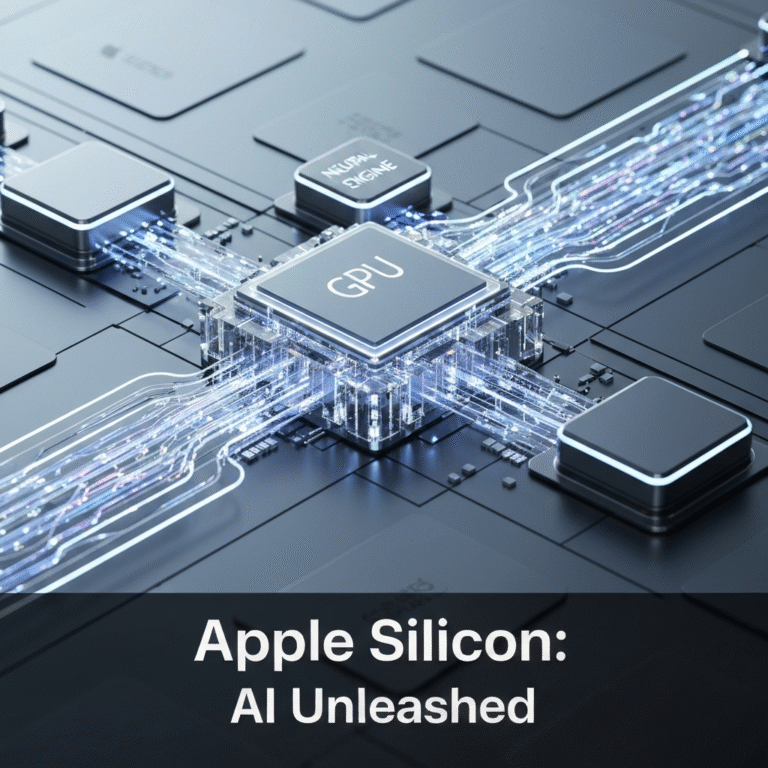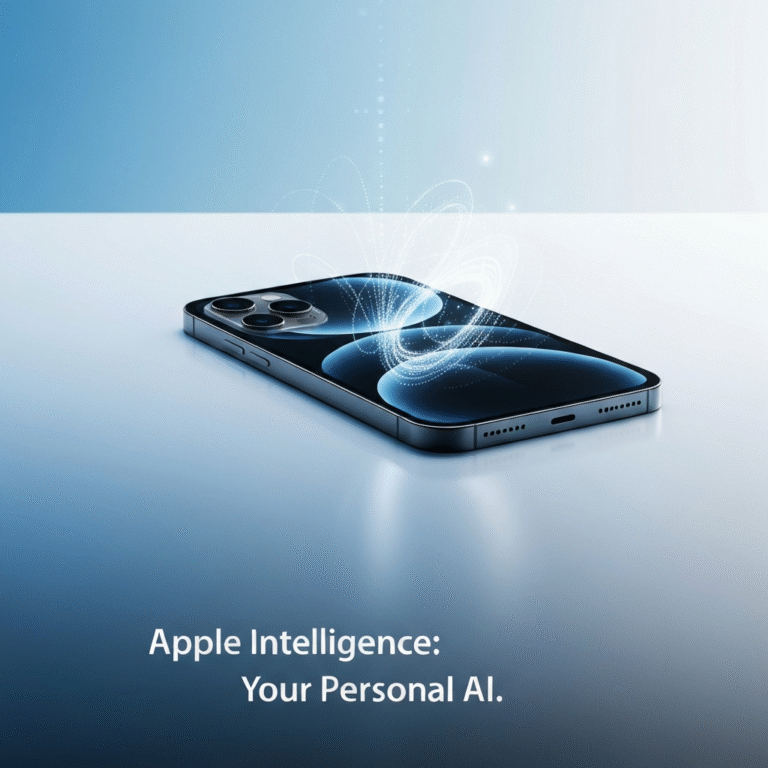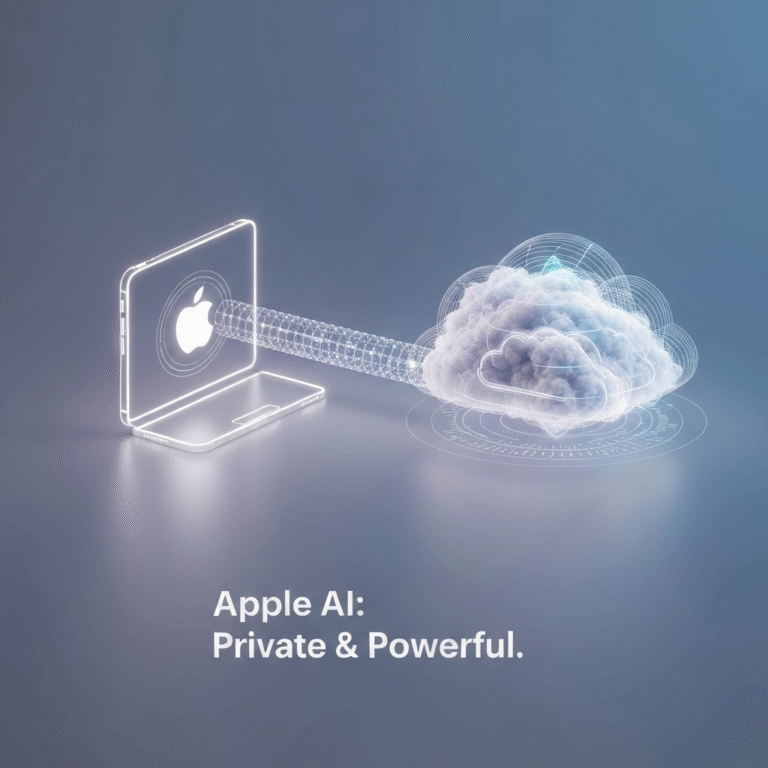
You've heard the terms 'AI' and 'machine learning' everywhere, especially when Apple announces a new iPhone or Mac. At the heart of these new capabilities is a powerful, specialized piece of hardware: the Apple Neural Engine (ANE). But what is it, really? Many users know it's important, but feel it's an abstract concept, disconnected from their daily use. This guide cuts through the technical jargon. We'll provide a definitive, user-centric explanation of the ANE, moving beyond complex performance metrics to show you how it works, how it differs from a CPU or GPU, and most importantly, how it powers the incredible features you use every day—from Face ID and computational photography to the revolutionary new 'Apple Intelligence.' This is your simple guide to the on-device AI brain that's making your Apple devices smarter, faster, and more private.
Core Understanding: What Is the ANE and What Isn't It?
To truly appreciate the Apple Neural Engine, you have to understand its specialized role. It's not just another processor; it's a purpose-built brain designed for a very specific type of work.
What is the Apple Neural Engine?
So, what is the Apple Neural Engine? In simple terms, it's a specialized processor (often called a Neural Processing Unit or NPU) built into Apple's A-series and M-series chips. The Apple Neural Engine (ANE) is a specialized processor (neural processing unit or NPU) primarily designed to accelerate artificial intelligence (AI) and machine learning (ML) tasks, performing complex mathematical operations quickly and efficiently.
Think of it like this: your device's main processor (the CPU) is a brilliant generalist, capable of handling all sorts of tasks. The graphics processor (GPU) is a specialist for visual data. The Apple Neural Engine, however, is a super-specialist, designed exclusively to understand and execute AI models. This is how the Apple Neural Engine works: by offloading AI tasks from the CPU and GPU, it allows your device to perform functions like natural language processing, image analysis, and predictive text without slowing down or draining your battery.
How the Neural Engine Differs from a CPU and GPU
One of the biggest misconceptions is that the ANE is just a faster version of a CPU or GPU. This isn't true. Their core designs are fundamentally different, each optimized for specific types of tasks. The table below breaks down their unique roles.
The ANE's Role in the Apple Ecosystem
The Apple Neural Engine is a cornerstone of Apple's on-device processing strategy. By handling AI tasks directly on your iPhone, iPad, or Mac, it ensures that your personal data doesn't need to be sent to the cloud for processing. This has massive implications for both speed and privacy, which we'll explore next.
Real-World Applications & Everyday User Benefits
The ANE isn't just about impressive specs; it's about tangible features that improve your daily experience. From unlocking your phone to the next generation of AI, the Neural Engine is working behind the scenes.
Powering Apple Intelligence: The Future of AI on Your Device
The most significant application of the Apple Neural Engine is Apple Intelligence. This new suite of AI features relies heavily on the ANE to run powerful generative models directly on your device. This on-device approach is what makes Apple Intelligence so fast, context-aware, and private.
Key Apple Intelligence features powered by the ANE include:
- Writing Tools: System-wide proofreading, rewriting, and summarizing text in apps like Mail, Notes, and Pages.
- Image Playground: Creating unique images and animations on the fly.
- Genmoji: Generating custom emoji based on your descriptions.
- Smarter Siri: A more natural, context-aware Siri that can understand you better and take action within apps.
The Apple Intelligence release date is set for beta access in the fall, but it requires a device with a powerful ANE. Apple Intelligence requires devices with Apple M-series chips or A17 Pro/A18/A19 chips and newer, including iPhone 15 Pro and Pro Max, and Macs and iPads with M1 chips or later.
Beyond AI: Computational Photography and Face ID
Long before Apple Intelligence, the ANE was revolutionizing your photos. Apple Neural Engine computational photography is the magic behind features like Portrait Mode with Depth Control, Smart HDR, and Deep Fusion. When you snap a picture, the ANE analyzes the scene pixel by pixel in real-time to optimize texture, detail, and lighting. It's how your iPhone camera can produce professional-looking shots.
Similarly, the Apple Neural Engine Face ID system is a marvel of on-device AI. It projects and analyzes thousands of invisible dots to create a precise depth map of your face, securely authenticating you in a fraction of a second. This entire process happens securely within the ANE.
The Privacy Advantage and Other Key Applications
A core benefit of the Apple Neural Engine is privacy. Because the ANE processes sensitive data—like your face map, photos, and language patterns—directly on your device, that information never has to leave your control. This is a fundamental difference from many cloud-based AI services.
Other key applications include:
- Apple Neural Engine Siri: On-device speech recognition allows Siri to process many requests without an internet connection, making it faster and more private.
- Apple Neural Engine Augmented Reality: The ANE helps ARKit place virtual objects into the real world seamlessly by quickly understanding surfaces, objects, and environments.
ANE Performance and Developer Access
The power of the Neural Engine has grown exponentially since its introduction, enabling developers to create entirely new kinds of intelligent apps.
From A11 Bionic to M4: The Evolution of ANE Performance
The performance of the ANE is often measured in Trillions of Operations Per Second (TOPS). The Apple A11 Bionic Neural Engine performs 600 billion operations per second (0.6 TOPS), while the M4 Neural Engine is capable of 38 trillion operations per second (38 TOPS). This exponential growth in Apple Neural Engine M-series performance is what makes demanding on-device AI, like Apple Intelligence, possible.
This raw power translates into faster app performance, more capable AI features, and a more responsive user experience across the board. For a more technical breakdown, you can take a deep dive into the M-series AI performance and see how the architecture has evolved.
How Developers Tap into the Neural Engine with Core ML
Apple provides a framework called Core ML that allows developers to integrate trained machine learning models into their apps. When an app uses a Core ML model, the system automatically utilizes the Apple Neural Engine whenever possible. According to official Apple developer documentation, this gives developers direct access to its incredible efficiency without needing to write low-level code. This Core ML Neural Engine integration is what allows third-party apps to perform lightning-fast AI tasks, from real-time video filters to advanced photo editing.
Through CoreML and tools like CoreMLTools, developers can optimize their models to take full advantage of the ANE, ensuring their apps are both powerful and energy-efficient.
---
Last Updated: September 2024
Frequently Asked Questions
What is the Apple Neural Engine?
The Apple Neural Engine (ANE) is a specialized processor (NPU) in Apple's A-series and M-series chips designed specifically to run artificial intelligence and machine learning tasks. It works alongside the CPU and GPU to make features like Face ID, computational photography, and Apple Intelligence fast, efficient, and private by handling AI calculations directly on the device.
Is the Apple Neural Engine the same as a GPU?
No. While both are good at parallel processing, a GPU is optimized for graphics and visual output. The Neural Engine is even more specialized and power-efficient for the specific mathematical operations used in AI models. It's a purpose-built processor for machine learning, not a general-purpose graphics unit.
Which devices will get Apple Intelligence?
Apple Intelligence requires a powerful Neural Engine. It will be available on the iPhone 15 Pro and iPhone 15 Pro Max, the upcoming iPhone 16 lineup, and any iPad or Mac equipped with an M1 chip or a newer version (M2, M3, M4).
How does the Neural Engine improve privacy?
The Neural Engine improves privacy by performing AI-related tasks directly on your device. This means sensitive data, such as your Face ID map, photos for analysis, and personal language patterns, does not need to be sent to the cloud for processing. Your data stays on your device, under your control.




